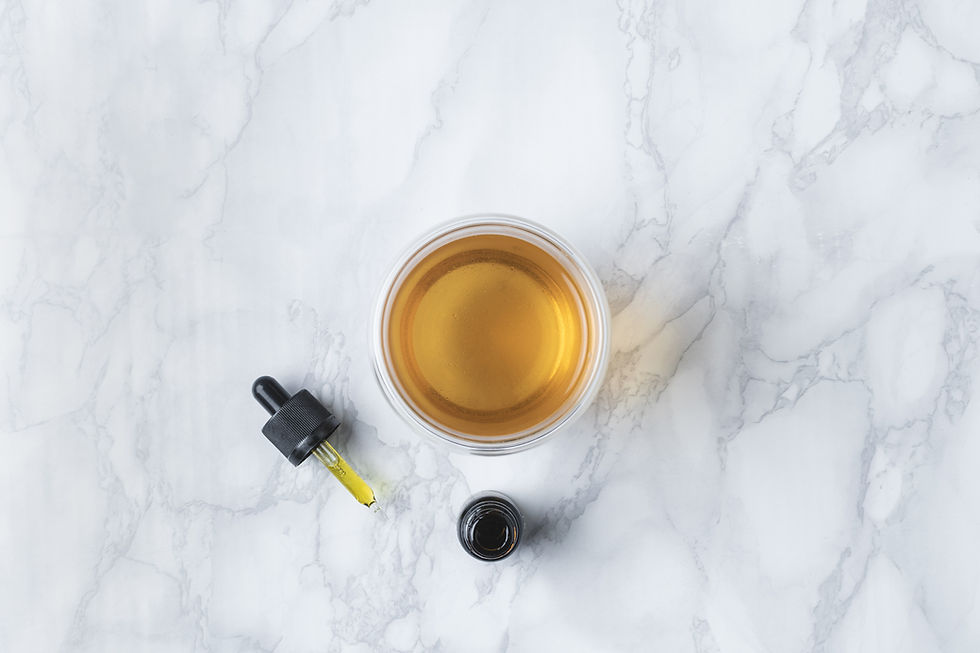Cannabinol may prevent dementia and Parkinson's
- World Half Full

- Jan 25, 2022
- 3 min read
Updated: Jan 5, 2024
HEALTH

Decades of research on medical cannabis has focused on the compounds THC and CBD in clinical applications. But less is known about the therapeutic properties of cannabinol (CBN). Now, new research from the Salk Institute shows how CBN can protect nerve cells from oxidative damage, a major pathway to cell death. The findings, published in Free Radical Biology and Medicine, suggest CBN has the potential to treat age-related neurodegenerative diseases, such as Alzheimer’s.
Decades of research on medical cannabis has focused on the compounds THC and CBD in clinical applications. But less is known about the therapeutic properties of cannabinol (CBN). Now, new research from the Salk Institute shows how CBN can protect nerve cells from oxidative damage, a major pathway to cell death. The findings, published in Free Radical Biology and Medicine, suggest CBN has the potential to treat age-related neurodegenerative diseases, such as Alzheimer’s.
“We’ve found that cannabinol protects neurons from oxidative stress and cell death, two of the major contributors to Alzheimer’s,” says senior author Pamela Maher, a research professor and head of Salk’s Cellular Neurobiology Laboratory. “This discovery could one day lead to the development of new therapeutics for treating this disease and other neurodegenerative disorders, like Parkinson’s disease.”
Though derived from the cannabis plant and molecularly similar to THC, CBN isn’t psychoactive. It’s also less heavily regulated by the US Food and Drug Administration. Previous research by Maher’s lab found that CBN had neuroprotective properties, but it wasn’t clear how it worked. This new study explains how CBN works.
Maher’s team looked at the process of oxytosis, which is thought to occur in the ageing brain. Growing evidence suggests it may be a cause of Alzheimer’s disease. Oxytosis can be triggered by the gradual loss of an antioxidant called glutathione, causing neural cell damage and death. When scientists treated nerve cells with CBN and then introduced an agent to stimulate oxidative damage, they found CBN protected mitochondria, the cell’s powerhouses within the neurons. In damaged cells, oxidation caused the mitochondria to curl up like donuts — a change that’s also been seen in ageing cells taken from the brains of people with Alzheimer’s disease. Treating cells with CBN prevented the mitochondria from curling up and kept them functioning well.
To confirm the interaction between CBN and mitochondria, researchers then replicated the experiment in nerve cells that had the mitochondria removed. In these cells, CBN no longer demonstrated its protective effect. “We were able to directly show that maintenance of mitochondrial function was specifically required for the protective effects of the compound,” Maher says.
In another key finding, researchers showed that CBN didn’t activate cannabinoid receptors, which are required for cannabinoids to produce a psychoactive effect, meaning CBN works without causing the individual to get “high”.
“Evidence has shown that CBN is safe in animals and humans. Because CBN works independently of cannabinoid receptors, CBN could also work in a wide variety of cells with ample therapeutic potential,” says first author Zhibin Liang, a postdoctoral fellow in the Maher lab.
The findings have implications for other neurodegenerative diseases, such as Parkinson’s, which is also linked to glutathione loss. “Mitochondrial dysfunction is implicated in changes in various tissues, not just in the brain and ageing, so the fact that this compound is able to maintain mitochondrial function suggests it could have more benefits beyond Alzheimer’s,” Maher says.
Next up, Maher and her team are seeing if they can reproduce their results in mice.
We’ve found that cannabinol protects neurons from oxidative stress and cell death, two of the major contributors to Alzheimer’s disease.
Pamela Maher
| Top sources of glutathione
The best dietary sources of glutathione include parsley, spinach, cabbage, garlic, Brussels sprouts, beetroot, avocado, and broccoli, among others.

BROCCOLI has about 9mg of glutathione in every 100g, as well as other nutrients, such as vitamin K, vitamin C, dietary fibre, carotenoids. Source
PARSLEY’S chlorophyll and antioxidants are excellent at stimulating glutathione production.
GARLIC’S sulphuric acids are a major source of glutathione. Source
SPINACH has more than 11mg of glutathione in every 100g. Source
CABBAGE, as with all cruciferous vegetables, is high in glutathione, along with B vitamins, vitamin C, calcium, protein, selenium, and iron.
BRUSSELS SPROUTS are known to boost glutathione production, which is actually far more important than the daily intake of glutathione. Source
BEETROOT contains polyphenols and betaine that can stimulate the liver’s production of glutathione very effectively.
AVOCADO is one of the best food sources of glutathione, with just 128g of avocado delivering about 30mg of glutathione. Source
OTHER FOOD SOURCES
Rocket (aka arugula)
Bok choy
Cauliflower
Collard greens
Kale
Mustard greens
Radish
Turnip
Watercress
And to help with glutathione production, selenium (for example, Brazil nuts, just 6-8 nuts a day)




Comments